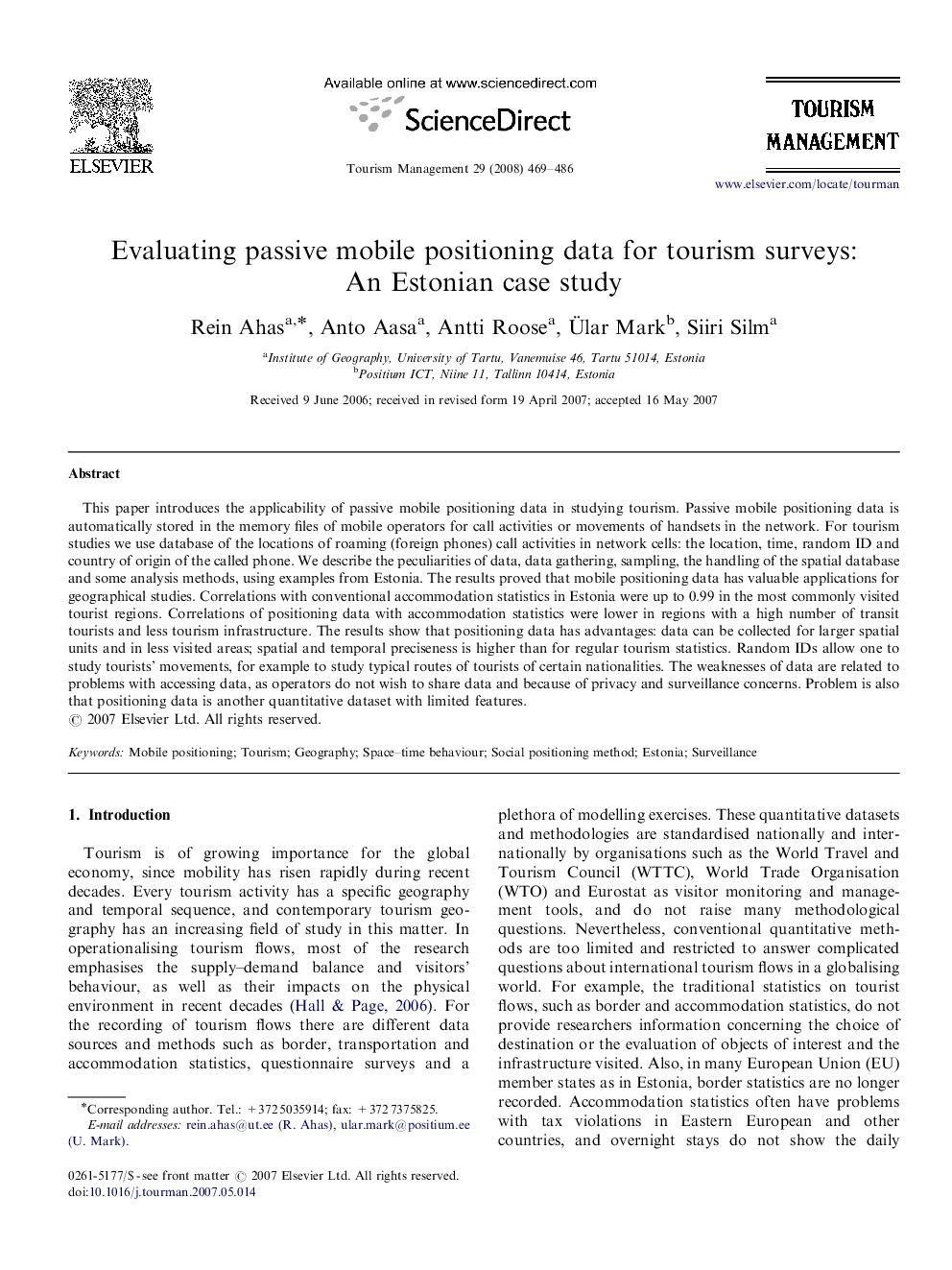| Article ID | Journal | Published Year | Pages | File Type |
|---|---|---|---|---|
| 1013119 | Tourism Management | 2008 | 18 Pages |
This paper introduces the applicability of passive mobile positioning data in studying tourism. Passive mobile positioning data is automatically stored in the memory files of mobile operators for call activities or movements of handsets in the network. For tourism studies we use database of the locations of roaming (foreign phones) call activities in network cells: the location, time, random ID and country of origin of the called phone. We describe the peculiarities of data, data gathering, sampling, the handling of the spatial database and some analysis methods, using examples from Estonia. The results proved that mobile positioning data has valuable applications for geographical studies. Correlations with conventional accommodation statistics in Estonia were up to 0.99 in the most commonly visited tourist regions. Correlations of positioning data with accommodation statistics were lower in regions with a high number of transit tourists and less tourism infrastructure. The results show that positioning data has advantages: data can be collected for larger spatial units and in less visited areas; spatial and temporal preciseness is higher than for regular tourism statistics. Random IDs allow one to study tourists’ movements, for example to study typical routes of tourists of certain nationalities. The weaknesses of data are related to problems with accessing data, as operators do not wish to share data and because of privacy and surveillance concerns. Problem is also that positioning data is another quantitative dataset with limited features.
